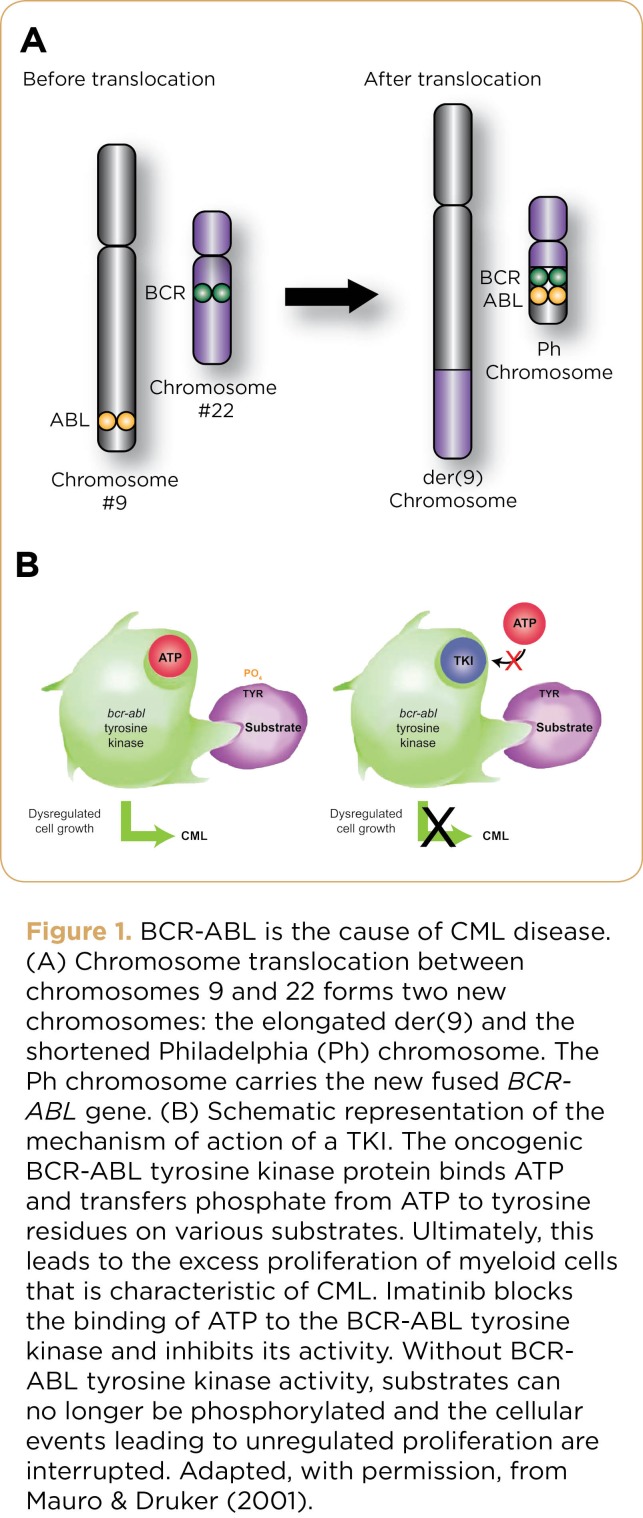Figure 1.
Figure 1. BCR-ABL is the cause of CML disease. (A) Chromosome translocation between chromosomes 9 and 22 forms two new chromosomes: the elongated der(9) and the shortened Philadelphia (Ph) chromosome. The Ph chromosome carries the new fused BCRABL gene. (B) Schematic representation of the mechanism of action of a TKI. The oncogenic BCR-ABL tyrosine kinase protein binds ATP and transfers phosphate from ATP to tyrosine residues on various substrates. Ultimately, this leads to the excess proliferation of myeloid cells that is characteristic of CML. Imatinib blocks the binding of ATP to the BCR-ABL tyrosine kinase and inhibits its activity. Without BCRABL tyrosine kinase activity, substrates can no longer be phosphorylated and the cellular events leading to unregulated proliferation are interrupted. Adapted, with permission, from Mauro & Druker (2001).

